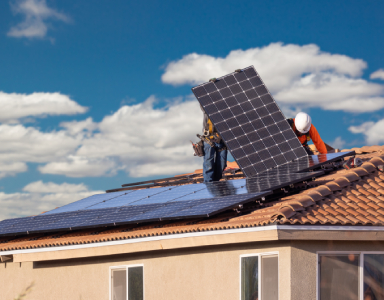
How to take advantage of self-consumption surpluses?
If you have decided to install solar panels in your home or business, you are bound to have wondered what to do with the energy that you generate but do not consume: the surpluses. There are lots of options for taking advantage of the solar energy that you do not use on a daily basis such as selling it or using it for other purposes.
In the last two years, self-consumption installed capacity in Spain has grown by 425% (from 623 MW in 2020 to 2,649 MW in 2022), according to APPA Renovables. So what are the reasons for this growth? The reasons include the increase in the price of electricity in 2021 and 2022 caused by the rise in gas prices, the facilities and benefits that electricity distribution companies and administrations are beginning to offer and the approval of the Self-consumption Roadmap as part of the government's National Integrated Energy and Climate Plan (PNIEC).
If you are among those who have decided to install solar panels in your home or business, you are bound to have wondered what to do with the energy that you generate but do not consume: the surpluses. Fortunately, there are lots of options for taking advantage of the solar energy that you do not use on a daily basis such as selling or using it for other purposes.
How to use self-consumption surpluses
Let's start by explaining what precisely self-consumption surpluses are. They are all of the energy that we generate with our panels and do not use at the time it is produced. Since, in general, the hours of solar energy production usually coincide with the times when the least amount of electricity is used at home, it is very common for all homes or businesses where there are solar panels producing energy to have a variable volume of surpluses.
There are various ways of using these surpluses:
Storage in physical batteries
Storing unused energy in physical batteries is one of the options that makes the most sense. As with a mobile phone or a car, the energy produced is stored in a battery for use later when it is required and more expensive, especially at night.
This option is ideal for those who are sure that they will have significant surpluses to store and allows the electricity grid to be even more independent and self-sufficient.
Anyone can install a battery in their home, although it should be borne in mind that this entails a significant investment.
Compensation for surpluses
This option enables users to sell surpluses to the supplier. The energy produced that is not consumed is fed into the power grid. The company assesses the unused energy in the house at a €/kWh price and then offers a discount on the bill. For this option, as well as having solar panels, you need a contract with a supplier.
In Spain, this option is regulated and limited to the energy consumed. Which is to say that the energy fed into the grid, compensated for in euros, cannot be greater than the energy consumed. So although this is a great way to get an economic benefit from the energy produced, you may not take full advantage of all of your surpluses, so many users who choose this option do so in combination with others, such as virtual batteries.
Virtual batteries
With virtual batteries, companies offer the possibility that surplus kWh that cannot be compensated for on the user's bill can be accumulated in the form of an amount. This amount can then be applied as a discount on the immediately subsequent bill or on future bills from the same electricity supply point.
In this way, a saving system is offered that goes a step beyond the surplus energy compensation tariffs that were available until now. An example is the one that we offer with our Solar Simply tariff with a virtual battery.
In this way, users who choose this solution can reach bills of up to €0 and even build up a larger balance to be discounted on future bills, since the amount that can be accumulated in the virtual battery is unlimited.
Schedule the use of high-consumption appliances
Washing machines, dryers, dishwashers... these are among the appliances that consume the most electricity in the home. And programming them is an ideal way of taking advantage of surpluses from solar panels and optimising energy consumption.
Charging electric vehicles and tools
Charging electric vehicles and tools is another very useful way of taking advantage of surpluses. Generally, an electric car takes between four and eight hours to fully charge and needs between 12 and 20 kWh per 100 km, so it is very feasible to take advantage of the surplus energy at home.
Use for heating water
The boiler is another appliance that accounts for a significant proportion of domestic energy consumption. In homes that still have this heating based on gas or other energy sources such as pellets or diesel, it may make sense to change and use solar panel self-consumption surpluses to heat water.
Related Content








